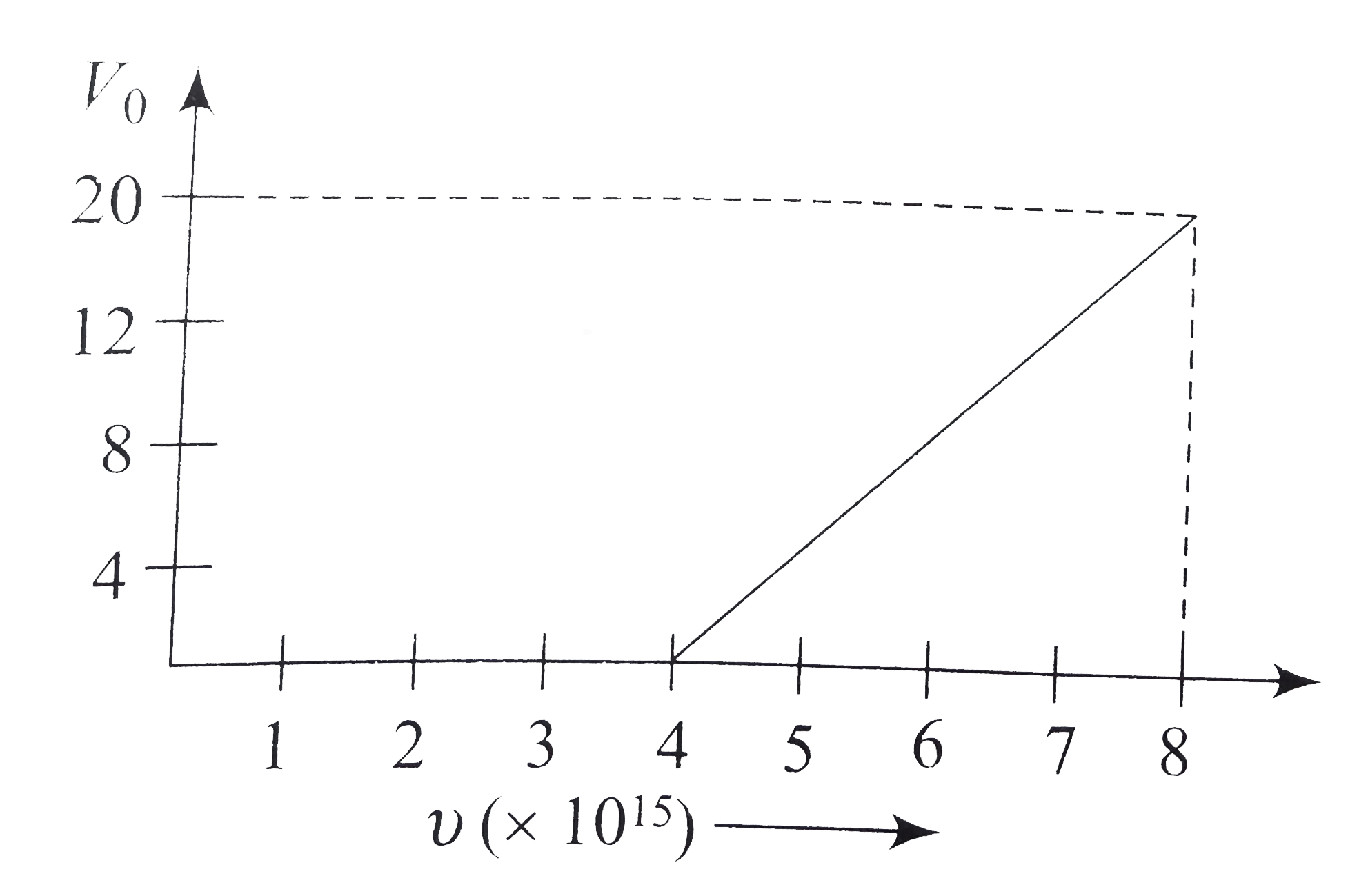When ultraviolet radiation is incident on a surface, no photoelectrons are emitted. If another beam causes photoelectrons to be emitted from the surface, it may consist of
(i) radio waves
(ii) infrared rays
(iii) X-rays
(iv) gamma rays
infra-red light
Visible light
X-rays
Micro-waves
The correct Answer is:C
To solve the problem, we need to understand the photoelectric effect and the relationship between the frequency of radiation and the emission of photoelectrons.
1. Understanding the Photoelectric Effect: The photoelectric effect occurs when light (or electromagnetic radiation) hits a material and causes the emission of electrons. For this to happen, the energy of the incoming radiation must be greater than the work function (the minimum energy required to remove an electron from the surface of the material).
2. Energy and Frequency Relationship: The energy of electromagnetic radiation is directly proportional to its frequency. This relationship is given by the equation:
E=h⋅f
where E is the energy, h is Planck's constant, and f is the frequency of the radiation.
3. Identifying the Frequency of Ultraviolet Radiation: Ultraviolet (UV) radiation has a certain frequency range. If UV radiation does not cause the emission of photoelectrons, it indicates that the energy of the UV radiation is not sufficient to overcome the work function of the material.
4. Comparing Other Radiation Types: We need to consider the frequencies of the other types of radiation mentioned:
- Radio Waves: Lowest frequency, much lower than UV.
- Infrared Rays: Also lower frequency than UV.
- X-rays: Higher frequency than UV.
- Gamma Rays: Even higher frequency than X-rays.
5. Conclusion: Since UV radiation does not emit photoelectrons, we need radiation with a frequency higher than that of UV. Therefore, the only options that can cause photoelectrons to be emitted are X-rays and gamma rays.
Final Answer:
The beams that can cause photoelectrons to be emitted from the surface are:
- (iii) X-rays
- (iv) Gamma rays
E=h⋅f
where E is the energy, h is Planck's constant, and f is the frequency of the radiation.
- Radio Waves: Lowest frequency, much lower than UV.
- Infrared Rays: Also lower frequency than UV.
- X-rays: Higher frequency than UV.
- Gamma Rays: Even higher frequency than X-rays.
The beams that can cause photoelectrons to be emitted from the surface are:
- (iii) X-rays
- (iv) Gamma rays
Topper's Solved these Questions
- ATOMSBOOK - AAKASH INSTITUTE ENGLISHCHAPTER - ATOMSEXERCISE - ASSIGNMENT SECTION C Objective (More than one option is correct )
6 Videos
- ATOMSBOOK - AAKASH INSTITUTE ENGLISHCHAPTER - ATOMSEXERCISE - ASSIGNMENT SECTION D (Linked Comprehension)
4 Videos
- ATOMSBOOK - AAKASH INSTITUTE ENGLISHCHAPTER - ATOMSEXERCISE - ASSIGNMENT SECTION A Objective (One option is correct )
35 Videos
- ALTERNATING CURRENT BOOK - AAKASH INSTITUTE ENGLISHCHAPTER - ALTERNATING CURRENT EXERCISE - Assignment (Section-J) (Aakash Chailengers Questions)
2 Videos
- COMMUNICATION SYSTEMS BOOK - AAKASH INSTITUTE ENGLISHCHAPTER - COMMUNICATION SYSTEMS EXERCISE - ASSIGNMENT SECTION D (Assertion-Reason)
10 Videos
Similar Questions
Knowledge Check
Assertion : Though light of a single frequency (monochromatic) is incident on a metal , the energies of emitted photoelectrons are different.
Reason : The energy of electrons emitted from inside the metal surface is lost in collision with the other atoms in the metal.AIf both assertion and reason are true and reason is the correct explanation of assertion.BIf both assertion and reason are true but reason is not the correct explanation of assertion.CIf assertion is true but reason is false.DIf both assertion and reason are false.
When a high frequency electromagnetic radiation is incident on a metallic surface, electrons are emitted from the surface. Energy of emitted photoelectrons depends only on the frequency of incident electromagnetic radiation and the number of emitted electrons depends only on the intensity of incident light.
Einstein's protoelectron equation [Kmax=hv−ϕ} correctly explains the PE, where υ= frequency of incident light and ϕ= work function.
Q. The slope of the graph between stopping potential and frequency is [here h is the Planck's constant and e is the charge of an electron] is
View Solution
When a high frequency electromagnetic radiation is incident on a metallic surface, electrons are emitted from the surface. Energy of emitted photoelectrons depends only on the frequency of incident electromagnetic radiation and the number of emitted electrons depends only on the intensity of incident light.
Einstein's protoelectron equation [Kmax=hv−ϕ] correctly ecplains the PE, where υ= frequency of incident light and ϕ= work function.
Q. For photoelectric effect in a metal, the graph of the stopping potential V0 (in volt) versus frequency υ (in hertz) of the incident radiation is shown in Fig. The work function of the metal (in eV) is.
View SolutionWhen the light of wavelength 400nm is incident on a metal surface of work function 2.3eV, photoelectrons are emitted. A fasted photoelectron combines with a He2+ ion to form He+ ion in its third excited state and a photon is emitted in this process. Then the energy of the photon emitted during combination is
View SolutionWhite light consisting of wavelengths 380nm≤λ≤750 nm is incident on a lead surface. For which one of the following ranges of wavelength will photoelectrons be emitted from the elad surface that has a work funcation W0=6.63×10−29J?
View SolutionThe kinetic energy of photoelectrons emitted by a photosensitive surface depends on the internsity of the incident radiation
View SolutionThe work function for a metal is 4eV. To emit a photoelectron of
zero velocity from the surface of the metal, the wavelength of
incident light should be :
View SolutionThe work function for a metal is 4eV. To emit a photoelectron of zero velocity from the surface of the metal, the wavelength of incident light should be :
View Solution
